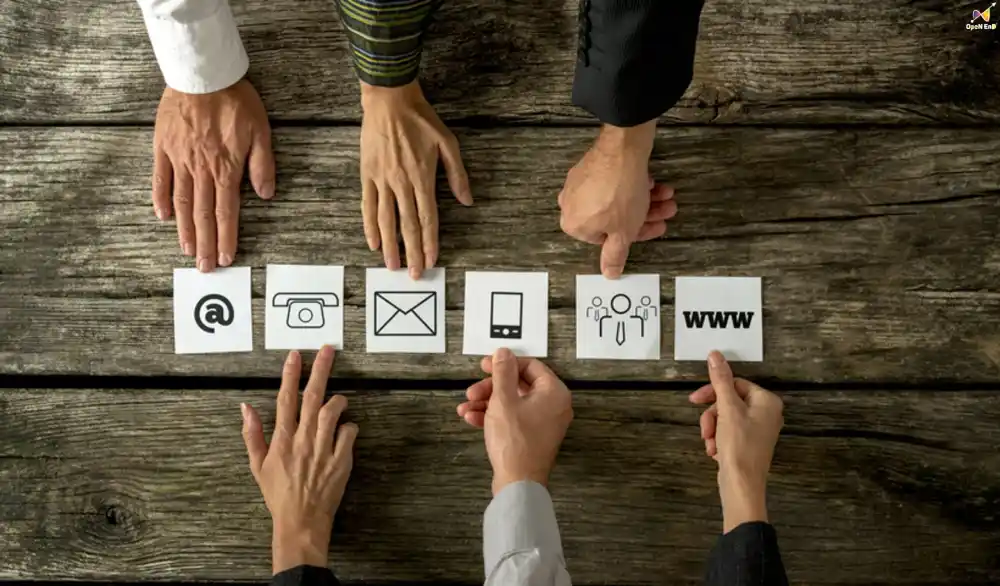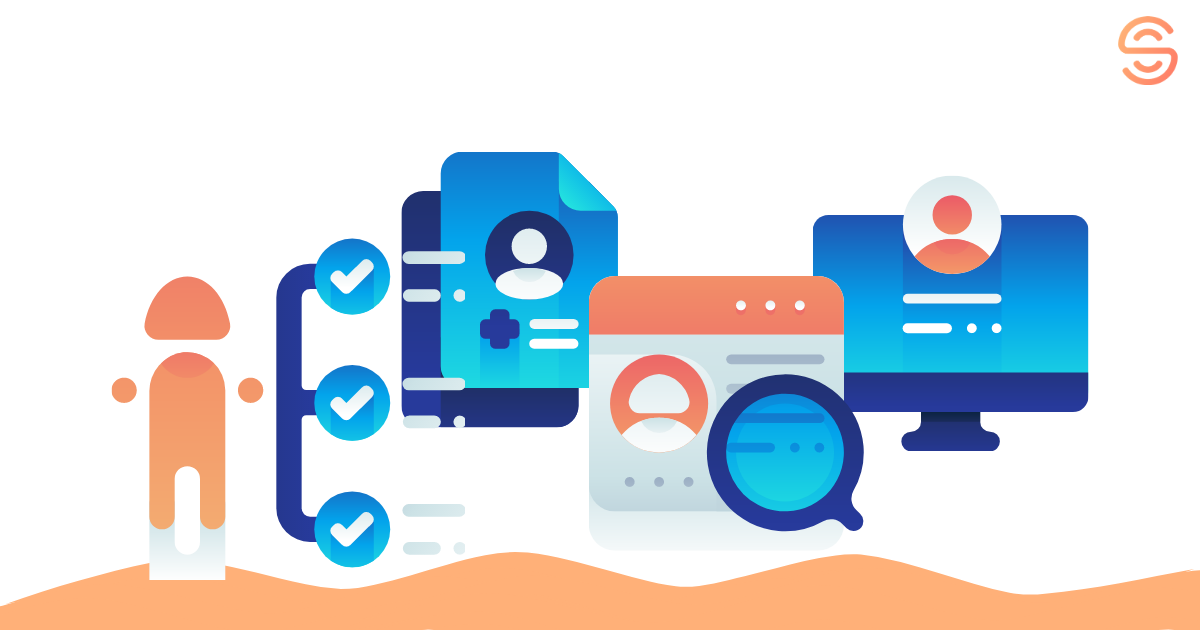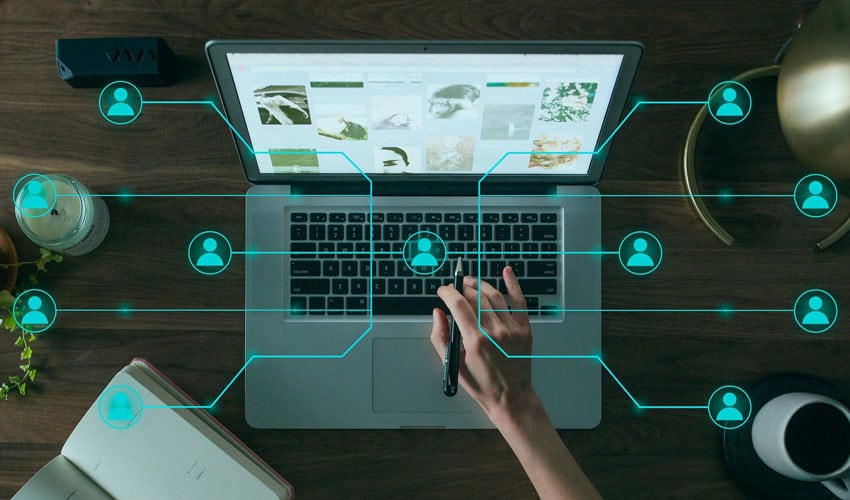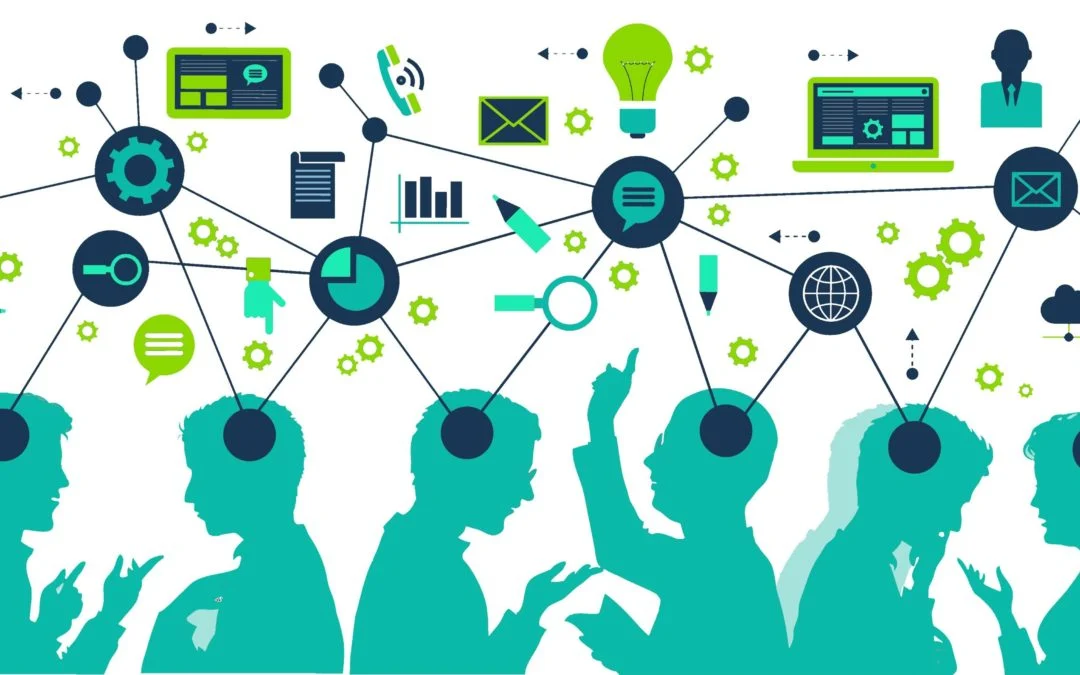B2B Customer Persona: What it is and How to Build an Effective One
Explore the concept of a B2B customer persona and learn how to create an effective one to optimize your business strategy and boost sales growth.

1. What is a B2B Customer Persona?
A B2B (Business-to-Business) customer persona is a model or profile that represents a company's ideal customer. It's a tool that helps businesses gain a deeper understanding of their target customers, enabling them to optimize their marketing and sales strategies. A B2B customer persona includes detailed information about the client company, such as its industry, size, location, and the characteristics of the decision-maker. It also incorporates factors like their needs, business challenges, and purchasing behavior.

2. Why Do You Need a B2B Customer Persona?
Creating a B2B customer persona is a critical step in a business's strategy. Here are the main reasons why:
2.1. Deeper Understanding of Your Target Customers
Defining a B2B customer persona helps a business better understand its target customers. By grasping their characteristics, needs, and challenges, the business can create more relevant and valuable solutions for them.
2.2. Optimized Marketing and Sales Strategies
With a clear customer persona, businesses can optimize their marketing and sales strategies. This includes choosing effective outreach channels, creating engaging content, and personalizing marketing messages to attract and retain customers.
2.3. Improved Customer Experience
Understanding your target customer helps you provide a better customer experience. This can involve offering professional customer service, quickly resolving customer issues, and creating relevant promotional programs.
2.4. Enhanced Resource Efficiency
By accurately identifying the target customer, businesses can allocate resources more effectively. This helps save on marketing and sales costs while improving the efficiency of business operations.
2.5. Increased Competitiveness
When a business understands and better serves the needs of its target customers, it gains a stronger competitive advantage in the market. This helps the business not only attract but also retain long-term customers.
2.6. Sales Growth
Ultimately, correctly defining a B2B customer persona helps a business grow its sales. By targeting the right audience and providing suitable solutions, a business can improve its conversion rates and average order value.
Defining a B2B customer persona offers not only short-term benefits but also builds a solid foundation for the business's long-term, sustainable growth.

3. Typical Criteria for a B2B Customer Persona
When building a B2B customer persona, there are four key criteria that businesses should focus on to ensure the persona helps optimize marketing and sales strategies. These criteria include buyer demographics, psychographics, habits, and finally, creating the final B2B customer persona.
3.1. Buyer Demographics
Buyer demographics are the first and most important criterion. This includes basic information about the client company, such as:
- Company Name: Helps identify the customer's identity.
- Industry: Understanding the customer's field of operation.
- Company Size: This can include the number of employees, annual revenue, and geographic location.
- Buyer's Role: Identifying who the main decision-maker is in the purchasing process.
3.2. Psychographics
Psychographics help you understand the factors influencing a customer's purchasing decision. Psychographic factors include:
- Motivations: What drives the customer to buy your product or service?
- Goals: The business objectives the customer wants to achieve.
- Challenges: The problems the customer is facing and needs to solve.
3.3. Habits
A customer's habits are also a crucial criterion for building an effective B2B customer persona. This includes:
- Purchasing Behavior: The methods and processes a customer typically uses to buy a product or service.
- Channels: The communication and information channels the customer prefers to use.
- Buying Timeline: The time frame in which customers typically make purchasing decisions.
3.4. Final B2B Customer Persona
After collecting and analyzing information from the three criteria above, the final step is to create the complete B2B customer persona. This persona will include:
- A Detailed Profile: A summary of all the important information about the customer.
- Key Characteristics: Identification of the customer's most notable traits.
- Behaviors and Needs: A clear description of the customer's purchasing behavior and specific needs.
Creating the final B2B customer persona gives a business a clear, comprehensive view of its target customer, allowing it to build more effective marketing and sales strategies.

4. Practical Examples of B2B Customer Personas
To better understand how to build a B2B customer persona, let's look at some practical examples. These examples will illustrate how to analyze and create a customer profile based on the criteria discussed.
4.1. B2B Customer Persona – Director of Information Technology (IT)
Basic Information:
- Company Name: XYZ Technology Company
- Industry: Information Technology
- Company Size: 500 employees
- Role: Director of Information Technology
Demographics:
- Age: 45
- Gender: Male
- Experience: 20 years in the IT field
Psychographics:
- Motivations: Seeks advanced technology solutions to improve work efficiency and system security.
- Goals: Ensures the company's IT systems are stable and secure.
- Challenges: Deals with increasing cybersecurity threats and keeps systems updated.
Habits:
- Purchasing Behavior: Thoroughly researches technology solutions before making a purchasing decision.
- Channels: Attends technology conferences and reads specialized industry magazines.
- Buying Timeline: Purchasing decisions are typically made after approval from senior management.
4.2. B2B Customer Persona – Direct User of a Solution or Software
Basic Information:
- Company Name: ABC Manufacturing Company
- Industry: Manufacturing
- Company Size: 300 employees
- Role: Direct user of production management software
Demographics:
- Age: 30
- Gender: Male/Female
- Experience: 5 years working in the manufacturing sector
Psychographics:
- Motivations: Seeks software solutions that make work easier and more efficient.
- Goals: Improves work productivity and reduces errors in the production process.
- Challenges: Needs to get familiar with new technologies and change current work processes.
Habits:
- Purchasing Behavior: Often tests demo versions of software before proposing a purchase.
- Channels: Attends online training courses and webinars on production management software.
- Buying Timeline: Software purchasing decisions are usually made after a period of testing and effectiveness evaluation.
4.3. B2B Customer Persona – Customer Management Director
Basic Information:
- Company Name: DEF Financial Services Company
- Industry: Finance
- Company Size: 1,000 employees
- Role: Customer Management Director
Demographics:
- Age: 40
- Gender: Female
- Experience: 15 years in customer management and customer service
Psychographics:
- Motivations: Seeks comprehensive customer management solutions to improve customer relationships.
- Goals: Increases customer satisfaction and loyalty.
- Challenges: Manages a large amount of customer information and provides high-quality customer service.
Habits:
- Purchasing Behavior: Often consults with colleagues and partners before making a purchasing decision.
- Channels: Reads industry articles and attends conferences on customer management.
- Buying Timeline: Purchasing decisions are usually based on a thorough evaluation and feedback from the user team.

5. Steps to Build a B2B Customer Persona
To build an effective B2B customer persona, a business should follow these steps:
5.1. Select Your Target Market
Selecting the target market is the first and most crucial step in the process of building a B2B customer persona. A business needs to clearly identify the markets where its products or services can best meet a need. This helps focus resources on high-potential markets, thereby optimizing the business strategy.
- Example: A company providing enterprise management software might choose to focus on small and medium-sized businesses in the manufacturing and logistics industries, where the need for effective management and process automation is highest.
5.2. Research, Segment the Market, and Collect Data on Target Customer Attributes
After identifying the target market, the business needs to conduct research and market segmentation to better understand the different customer groups within that market. The specific steps include:
- Market Research: Collect information about the market size, trends, and customer needs. You can use market reports, surveys, and in-depth interviews to gather data.
- Example: Read industry reports, conduct online surveys, or hold interview sessions with businesses in the industry.
- Market Segmentation: Divide the market into smaller segments based on criteria such as industry, company size, location, and purchasing behavior.
- Example: Segment customers by industry (manufacturing, logistics), company size (fewer than 50 employees, 50-200 employees), or location (Northern, Central, Southern regions).
- Data Collection: Use methods like surveys, interviews, and data analysis to gather detailed information about the attributes of the target customer.
- Example: Use online survey tools like Google Forms, conduct direct interviews with customers, and analyze data from a CRM (Customer Relationship Management) system.
5.3. Build the Target B2B Customer Persona
Once you have enough information and data, you can start building the target B2B customer persona through two main steps:
5.3.1 Create an Identity
The first step in building a customer persona is creating an identity for the target customer. This includes:
- Basic Information: Includes company name, industry, size, location, and the role of the buyer.
- Example: ABC Co., Ltd., operating in the manufacturing industry, with a size of 100-200 employees, based in Ho Chi Minh City, and the purchasing decision-maker is the Production Director.
- Personal Characteristics: The age, gender, and experience of the decision-maker.
- Example: Production Director, 45 years old, male, with 20 years of experience in the manufacturing industry.
5.3.2 Add Depth to the Customer Persona
After you have the basic identity, you need to add depth to the customer persona by including the following factors:
- Motivations and Goals: Understand the customer's motivations and business goals.
- Example: The Production Director's motivation is to find a solution to improve production efficiency, reduce costs, and optimize processes.
- Challenges: Identify the challenges the customer is facing and how the business can help solve them.
- Example: The main challenge is maintaining production efficiency while facing a shortage of human resources and fierce competition from rivals.
- Purchasing Behavior: Analyze the customer's purchasing behavior, including the decision-making process and preferred information channels.
- Example: The Production Director often consults with business partners, attends industry conferences, and conducts online research before making a purchasing decision.
- Needs and Expectations: Identify the specific needs and expectations of the customer for the business's product or service.
- Example: Expects a software solution that is easy to use, integrates well with existing systems, and provides fast technical support.
By following these steps, a business will have a clear and detailed B2B customer persona, which allows for optimizing marketing and sales strategies, improving the customer experience, and achieving business goals.

Conclusion
In short, a B2B customer persona is not just a theoretical concept but an essential business tool. By building a detailed and insightful profile of your ideal customer, businesses can achieve significant benefits. This persona not only helps you better understand your customers' needs and challenges, but also allows you to optimize marketing and sales strategies, enhance resource efficiency, and improve the customer experience.
The process of building a B2B customer persona requires meticulous research, from analyzing their demographics and psychographics to their purchasing habits. This enables businesses to target the right audience, convey the right message, and ultimately drive sustainable sales growth. In essence, investing in a B2B customer persona is an investment in the long-term development of your business.